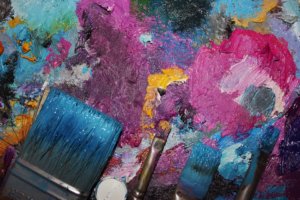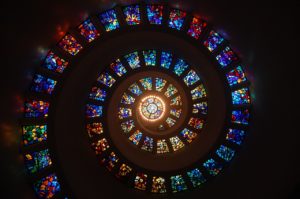Arabic calligraphy changed over time into many beautiful styles. Many of these styles were developed by artists in different parts of the Islamic Empire, and their work can be seen in architecture and in copies of the Qur’an or even in everyday objects.
The development of Arabic calligraphy led to the creation of several decorative styles that were designed to accommodate special needs or tastes and to please or impress others. The most outstanding of these techniques or scripts are Gulzar, Maraya or Muthanna, Zoomorphic, Siyaqat, and al-Khat al-Hurr.
Gulzar is defined by Safadi (1979) in Islamic Calligraphy as the technique of filling the area within the outlines of relatively large letters with various ornamental devices, including floral designs, geometric patterns, hunting scenes, portraits, small script, and other motifs. Gulzar is often used in composite calligraphy where it is also surrounded by other decorative units and calligraphic panels. Maraya or Muthanna is the technique of mirror writing in which the composition on the left reflects the composition on the right. In zoomorphic calligraphy, the words are manipulated and structured into the shape of a human figure, a bird, an animal, or an object. Al-Khat al-Hurr may be the most modern calligraphic script and was developed in different parts of the Arab world in the 1980s.
This free-style script does not follow a pre-set pattern but typically is elegant and highly stylized. It is excessively cursive, and the curves display marked contrast in line width. A curve might change abruptly from the heaviest possible line a pen can create to the thinnest possible line from the same pen.
Arabic calligraphy styles were adapted by Persian, Turkish, and Egyptian artists. The Persian styles of cursive developed in the 11th century and the Thuluth style came in the 17th century. These styles were also used to decorate books, mosques and even everyday objects, such as dishes.
While many religions have made use of figural images to convey their core convictions, Islam has instead used the shapes and sizes of words or letters. Because Islamic leaders saw in figural arts a possible implication of idolatry, Islam’s early theocracy looked to the artistry of calligraphy for religious expression.
In Islamic and Arabic cultures, calligraphy became highly respected as an art — the art of writing.





